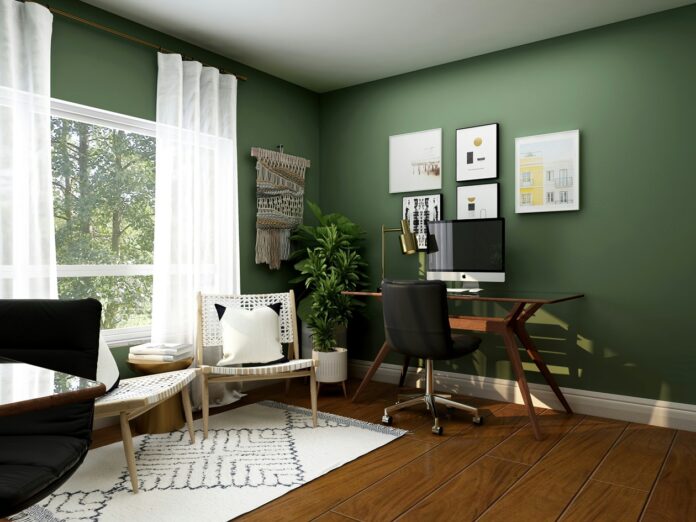The shift towards remote work has transformed the humble home office from a luxury into a necessity. Whether you’re working from home full-time or simply need a dedicated space for managing household affairs, creating a home office that’s both beautiful and functional can significantly impact your productivity, well-being, and overall satisfaction with your work environment.
Choosing the Right Location
The foundation of any successful home office begins with selecting the optimal location within your home. Ideally, you’ll want to choose a space that offers natural light, minimal distractions, and adequate room for your essential equipment. A spare bedroom is the obvious choice, but don’t overlook other possibilities such as a corner of your living room, a converted cupboard, or even a well-organised garage space.
When evaluating potential locations, consider the noise levels throughout different times of the day. Avoid areas adjacent to high-traffic zones like the kitchen during meal preparation times or children’s play areas. If you frequently take video calls, ensure your chosen space has a professional-looking background or can be easily arranged to appear tidy and uncluttered.
Maximising Natural Light and Ventilation
Natural light plays a crucial role in maintaining both productivity and mental health whilst working from home. Position your desk perpendicular to windows rather than directly facing them to minimise screen glare whilst still benefiting from daylight. If your chosen space lacks adequate natural light, invest in quality task lighting that mimics daylight as closely as possible.
Proper ventilation is equally important for maintaining focus and comfort throughout long working sessions. Ensure your space has adequate airflow, and consider adding a small fan or air purifier if necessary. Plants can also help improve air quality whilst adding a natural aesthetic element to your workspace.
Selecting Ergonomic and Stylish Furniture
Your furniture choices will significantly impact both the functionality and visual appeal of your home office. Start with a desk that provides adequate surface area for your computer, documents, and any other tools you use regularly. Consider your working style when selecting desk height and configuration—some people prefer the flexibility of a standing desk that allows them to alternate between sitting and standing throughout the day, which can help reduce the health risks associated with prolonged sitting.
Invest in a quality office chair that supports proper posture and can be adjusted to your specific needs. Look for chairs with lumbar support, adjustable height, and breathable materials. Remember that you’ll likely spend several hours a day in this chair, so comfort should be a priority alongside aesthetic considerations.
Storage solutions are essential for maintaining an organised and clutter-free workspace. Choose furniture pieces that serve dual purposes, such as a bookshelf that can display both work materials and decorative objects, or a filing cabinet that doubles as a printer stand.
Creating an Inspiring Colour Scheme
The colours you choose for your home office can significantly influence your mood and productivity. Whilst personal preference plays a large role, certain colours are known to promote focus and creativity. Blues and greens tend to have a calming effect and can help reduce stress, whilst warmer colours like soft yellows can stimulate creativity and energy.
Consider using a neutral base palette with accent colours that reflect your personality and professional needs. White or light grey walls provide a clean backdrop that won’t compete with your computer screen, whilst colourful artwork or accessories can add personality without overwhelming the space.
Incorporating Personal Touches and Décor
A home office should reflect your personality whilst maintaining a professional atmosphere. Display meaningful artwork, family photos, or collections that inspire you, but be mindful not to create visual clutter that might distract from your work.
Plants are an excellent way to add life and colour to your office space whilst providing air purification benefits. Choose low-maintenance varieties like snake plants, pothos, or peace lilies if you don’t have extensive gardening experience.
Consider adding textiles such as a small rug or curtains to soften the space and improve acoustics. These elements can help your office feel more like a comfortable room rather than a sterile workspace.
Organising for Maximum Efficiency
An organised office is essential for maintaining productivity and reducing stress. Implement systems for managing both physical and digital files, ensuring that everything has a designated place. Use desk organisers, drawer dividers, and labelling systems to keep supplies easily accessible.
Cable management is often overlooked, but crucial for maintaining a clean, professional appearance. Use cable clips, cord organisers, or a cable management tray to keep wires tidy and prevent them from becoming a tangled mess under your desk.
Technology and Connectivity Considerations
Ensure your chosen location has reliable internet connectivity and adequate electrical outlets for your equipment. Consider the placement of your router and whether you might need a Wi-Fi extender to ensure a strong signal in your office area.
Plan for proper cable management from the outset, and ensure you have surge protection for your valuable electronics. Good lighting for video calls and adequate ventilation for heat-generating equipment should also be factored into your technology setup.
Creating a beautiful and functional home office requires thoughtful planning and attention to both aesthetic and practical considerations. By focusing on location, lighting, ergonomic furniture, inspiring décor, and efficient organisation, you can create a workspace that not only supports your professional needs but also brings joy to your daily routine.






